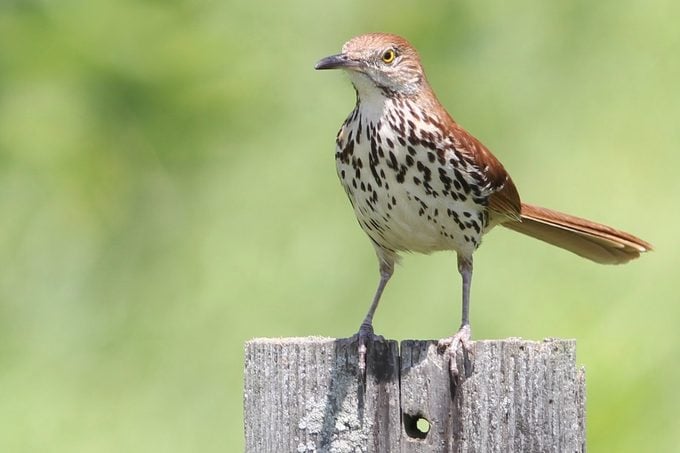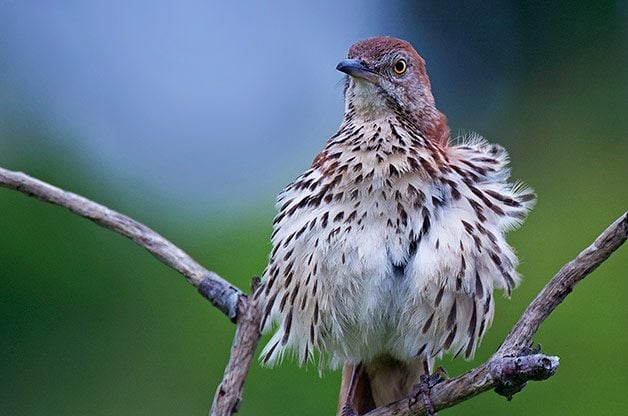Brown Thrasher: An Elusive, Musical Songbird
Updated: Apr. 20, 2022
Brown thrashers are excellent mimics and sing more than 1,000 tunes. Learn about these elusive songbirds and how to identify a brown thrasher.

Brown Thrasher Habitat
For a fairly large bird (nearly 12 inches), a brown thrasher is not that easy to spot. These elusive songbirds seek out dense thickets or tangled vegetation in the eastern United States. Thrashers spend most of their time in shrubbery. They may visit feeders that have dense cover nearby, or stop in to a backyard full of berry-laden shrubs.
What Do Brown Thrashers Look Like?
The adult brown thrasher’s most striking feature is its glowing yellow eyes. The bill is distinctive, too—long, with a slight downturn. The brown thrasher is a distant relative of the northern mockingbird and the gray catbird. Like those birds, the brown thrasher has a fairly long tail, thin bill and interesting voice, but its color pattern is completely different. Look for deep rufous browns on the head and back. Heavy brown streaking on the chest might suggest some kind of thrush or sparrow. The brown thrasher is sometimes mistaken for a wood thrush, but it has a longer tail and stripes—not round spots—on its chest.

What Do Brown Thrashers Eat?
Cover means everything to brown thrashers, so if you want to lure these birds to your yard, plant berry-producing shrubs that provide both food and shelter. They may visit feeders for seeds and nuts, provided you place them on or near the ground. Brown thrashers also forage on the ground for insects buried in soil or leaf litter. As they walk, they make thrashing motions with their heads, tossing aside twigs or leaves that might be in the way of a meal. Meet the towhees: The birds scratching up a storm in your backyard.
Brown Thrasher Nest
Unlike mating pairs of many species, both males and females select a nest site, incubate the eggs and feed the young. Babies leave the nest fully feathered, sometimes within nine days of hatching, earlier than most related species. What is a Fledgling? Learn the five stages of a baby bird’s life.
Brown Thrasher Song
Brown thrashers are excellent songsters and mimics. They have an entire catalog of songs and can sing more than 1,000 melodies. Thrashers and mockingbirds belong to the same family. Brown thrashers are not such accomplished mimics as the mockingbirds, but they do work some imitations into their songs. The male will perch up high to sing a series of rich, musical phrases, repeating each phrase twice before going on to the next one. But, of course, birds don’t read the books, and they don’t always sing the way they’re supposed to sing.
